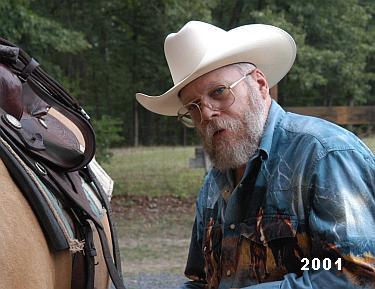
Frank Harrell
(AKA Cowboy Frank)January 23, 1952 -
IGRA# 6863
First attended a gay rodeo in 1996
Inducted 2018
Alfred Franklin Harrell the third was born in Rocky Mount, North Carolina on January 23rd 1952. During his early years, he liked to play with garden hoses and extension cords. His father use to tell the following story.
"Frank was almost three before he was old enough to see a Christmas tree and have any real grasp of what it was. That Christmas, after the tree lights had been on for a couple of hours, I picked him up and let him grab hold of one of the bulbs. (Remember the old bigger hot ones) He didn't touch the tree again that year, but he has been playing with lights and wires ever since."
The neighbors said Frank would grow up to be either a fireman or an electrician, and he's been both.
In the late 1950s, Frank's father's photographic business began to dry up and he was forced to find another source of income. He got a position in the photographic department at the Smithsonian Institution's new Museum of History and Technology (now called the Museum of American History) in Washington D.C. So at age 11, the family moved to Arlington, Virginia.
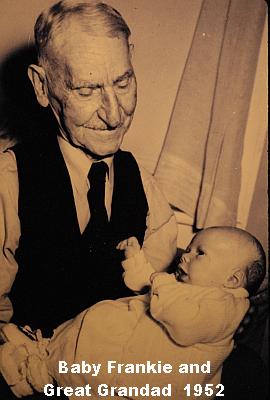
At a fairly young age Frank showed a talent for electrical and mechanical abilities. In the 7th grade the students in his class were given an aptitude test. Since then he has been proud of his mechanical aptitude score which was off the chart. Some of his other skills, such as spelling, foreign language and verbal communication scores were pretty dismal, but everything averaged out to be..... well, average.
In 1972, Frank got his dream job working for the Bell Telephone System. He wanted to be a telephone installer but he ended up on an assembly line sorting telephones as they were removed from houses and businesses and sent into a Western Electric plant to be cleaned and refurbished. This small group of about 10 guys sorted an average of fourteen thousand telephone sets a day. After a while Frank couldn't stand it any longer and had to quit.
Frank went through a number of jobs as apartment complex mechanic, drug store stock clerk and cashier, a resident technical director for a community center theatre, and eventually got a job he really liked as a cable TV service technician. That job lasted a good five years until management changed and the job became, as some people call it, a living hell, and he was again forced to quit.
On July 23, 1983, which coincidently just happens to be Frank's sister's 23rd birthday, Frank met his life partner, and eventual husband, Tom Lott. They hit it off right away and within 6 months had moved in together.
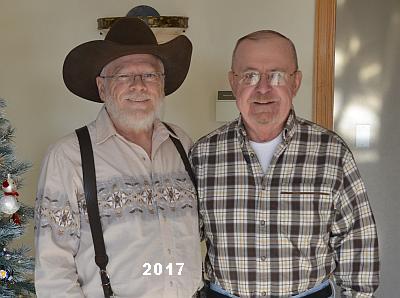
After quitting the cable company, Frank worked for a very large home owners association in Reston Virginia. His duties included electrical, plumbing, locksmithing, carpentry and working with the cabling and some system administration on their VAX 11-750 mini computer. This "mini-computer" was about 15 feet long by 4 feet high and 3 feet deep and had the processing power of about the same level as the iPhone one. It was during this period that one of the ladies in the office started calling him Cowboy because he always wore a cowboy hat. The name stuck and it wasn't long before everybody in the organization was using that nickname.
In 1988, Frank and Tom purchased a 29 foot travel trailer and a truck to pull it. In 1989, they sold the houses they had and took a two year sabbatical touring the country as full-timers. One of the goals they had on the trip was to visit as many of the National Park sites as they could get to. Before the trip ended, they had visited more than 320 sites.
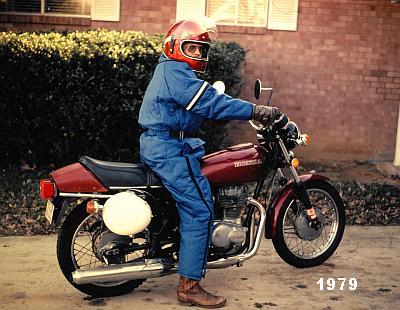
After the trip, they settled down in Northern Virginia and Tom returned to work. Within 8 months, Frank came down with pneumasisis phenomena, one of the more common, first-ailment diseases of AIDS victims prevalent at the time. Frank doesn't remember much of the next 6 weeks, except being on the operating table and remembering the nurse saying "Try not to cough..., We're losing him." Frank spent 2 weeks in intensive care and another month in an isolated room before recovering enough to return home. The doctors gave him 6 months to live, which was the average life expectancy of an AIDS patient in Frank's condition at that time.
Somehow, Frank made it past those 6 months. When they realized he had more time to live, Frank needed something to do. While they had been visiting all those parks, they had heard of a facility the Park Service has in West Virginia called "Harpers Ferry Interpretive Design Center". This is the central facility which is responsible for creating all the park brochures, museums, films, slide shows and many of the publications you see at the parks. The center employs some of the most brilliant people in the world in the field of museum development, educational communication and design. Frank thought this must be a great place to volunteer at so he got a position with the Audio Visual department. Most of his duties consisted of making VHS copies from master tapes of the videos shown in the parks to use as replacements for worn out tapes.
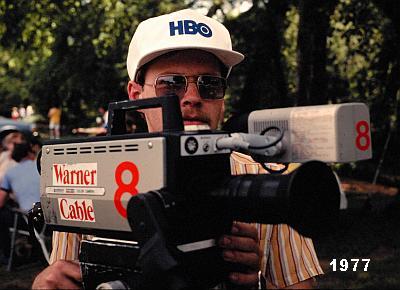
After about a year, the daily 100 mile round trip became a bit too much so Frank switched to volunteering at Manassas National Battlefield Park, which was only eleven miles from where he lived. He volunteered as the park's computer specialist.
While there, Frank taught many classes in computer operation to the park's employees. Frank, at his own initiative installed a computer network, which turned out to be the first network in any small park in the system. Frank believes in a system he calls trickle down. Each year some people in the park get new computers, usually those that are on their computer all day. Frank would take their old ones, rebuild them and trickle them down to the next person who needed an upgrade, then theirs would get trickled down and so forth. Frank's park was the first park in the entire National Park system where every employee had their own computer and, within a year, every computer was connected to the Internet and every employee had their own email account.

Another project Frank ended up with was to build the park's web page. This is where Frank began to learn html and how to build web sites that were both informative and easy to navigate. Manassas Battlefield was the first park in the system to have its own webpage, even ahead of Yellowstone and Yosemite. All of this was done only three years after the World Wide Web was invented.
In the 6 years Frank was at the park, he put in over 6,000 hours of volunteer time. Because of all the volunteer things Frank did, he was awarded the prestigious "Honorary National Park Ranger" award, the highest award the National Park Service has. When Frank received his, there had only been 120 of these awards given out in the history of the National Park system. A few of the other recipients up until that time were, Ansel Adams, First Lady, Lady Bird Johnson, Paul Mellon, John D. Rockefeller Jr, President John F Kennedy, and Hank Williams Jr. Frank believes he is the first non-famous person to have received the award.
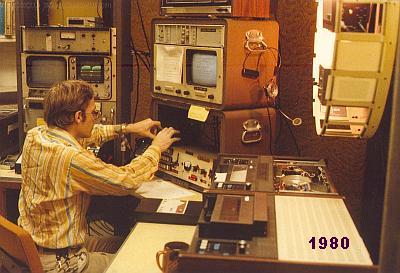
Back in the 1980's Frank had subscribed to Drummer and Honcho magazines. In one of the 1995 issues, he found an advertisement for Roundup Magazine which he immediately subscribed to. The first issue he received, June 1995, had the listing for the Gay Rodeos for next year. This was the first time Frank had heard of the gay rodeos. They already had plans for the weekend of the 1995 Atlantic Stampede so the first rodeo they were able to attend was the 1996 Rocky Mountain Regional Rodeo.
Frank had gotten into home video back in 1983, so of course he took his camera to Denver for their rodeo and has had either a video or digital still camera, or both, at every rodeo they have attended since then. Frank makes all his photographs and videos available for free to anyone who would like to see them. He just want's credit.
After leaving Manassas Battlefield, Frank began creating websites for small non-profits. In 2002, he took over the website for ASGRA and in 2005 became the webmaster for IGRA.
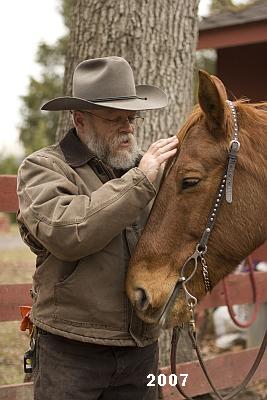
At the beginning of 2011, Frank and Tom moved to Castle Rock, Colorado just south of Denver. In July, of that year, due to a series of unrelated events, Frank found himself in possession of the IGRA Archives. Then, Frank went to work scanning programs and developing the Gay Rodeo History website. He registered the domain, GayRodeoHistory.org, and on July 26, 2011, the first pages were posted. During the next 8 months, Frank scanned away and on March 21, 2012, at 12:40 in the afternoon, after almost 13,000 scanned pages, the last of the 379 programs and 16 of the magazines in the archives at that point were posted. Since then the site has grown enormously. At the end of 2018, the site contains more than 497 rodeo and convention programs, thousands of photographs and videos, hundreds of rodeo buckles, pins, magazine articles, newspaper clippings, posters, rodeo rule books, and many other pages on the history of Gay Rodeo.
When people began to see our history online, many more donations were given to the collection which, over the next 6 years, quadrupled in size. The archives ended up taking their spare bedroom, much to the dismay of Tom.
On January 18, 2018, Frank woke up to find that his life partner and soul mate had passed away in the night. Since then Frank has sold the house and has purchased a new fifth wheel trailer and truck and has begun his second life as an RV full-timer, with the intention of attending as many rodeos as he can get to.